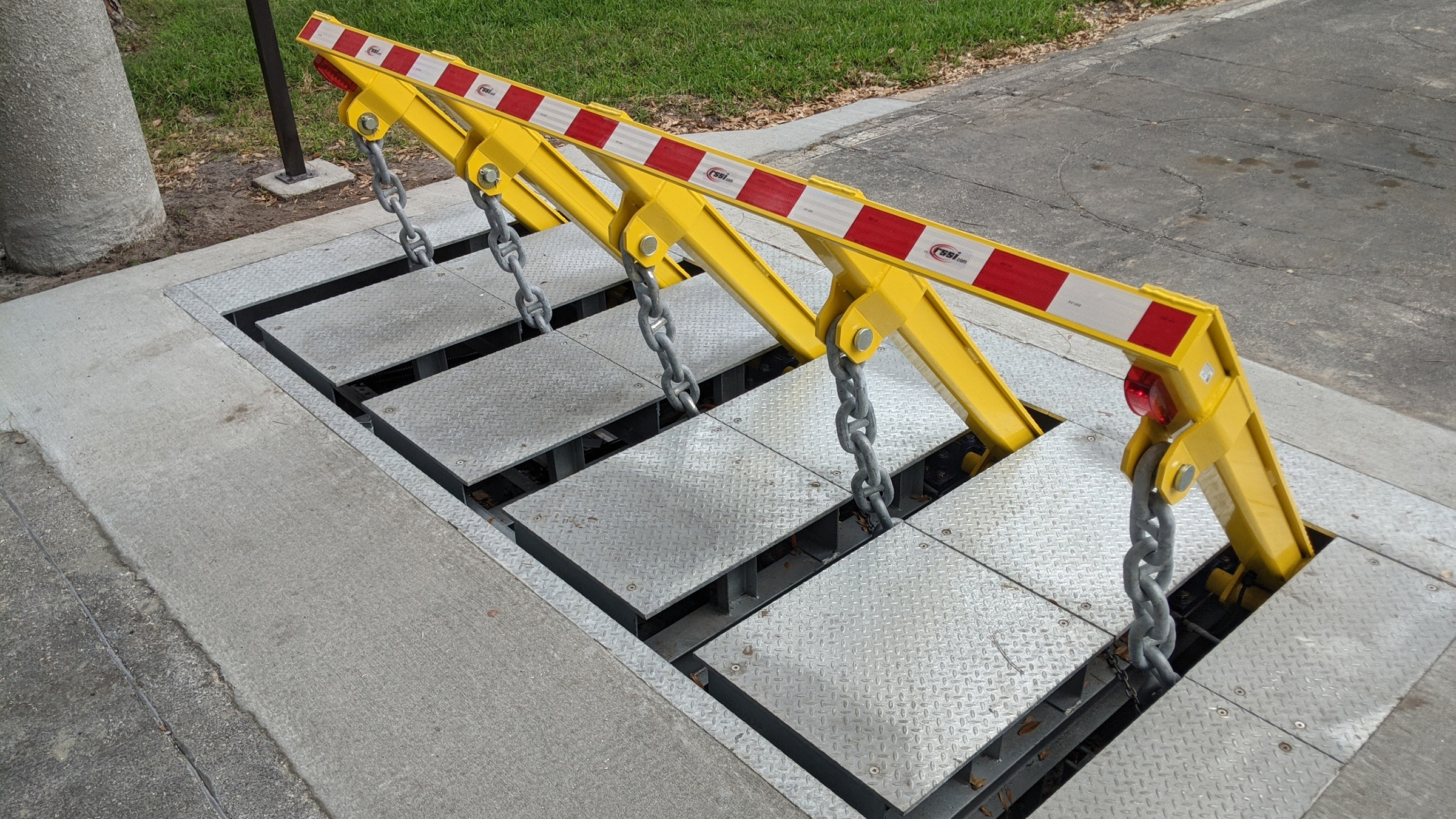Excitement About Wedge Barriers
5 Easy Facts About Wedge Barriers Shown

Indicators on Wedge Barriers You Need To Know
The continuing to be force used to
the cam web cam deploy the wedge plate 16 may might provided given an electromechanical actuator 84 or other various other. The springtime setting up 54 and the actuator 84(e. Wedge Barriers. g., electromechanical actuator)might run together to convert the camera and lift the wedge plate 16.
As pointed out over, the spring setting up 54 applies a constant pressure on the cam, while the electromechanical actuator may be controlled to put in a variable force on the cam, consequently enabling the lifting and lowering( i. e., releasing and pulling back )of the wedge plate 16. In particular embodiments, the constant force applied by the springtime setting up 54 might be flexible. g., electromechanical actuator) is disabled. As will certainly be valued, the springtime setting up 54 may be covered and secured from particles or various other aspects by a cover plate(e. g., cover plate 68 shown in FIG. 4) that may be considerably flush with the raised surface area 38 of the foundation 14. As stated over, in the deployed setting, the wedge plate 16 serves to obstruct accessibility or travel beyond the barrier 10. The obstacle 10(e. g., the wedge plate 16 )may block pedestrians or lorries from accessing a residential or commercial property or path. As talked about above, the obstacle 10 is connected to the anchor 30 protected within the foundation 14,

front brackets 71. Consequently, the linkage assemblies 72 might pivot and rotate to make it possible for the collapse and expansion of the link settings up 72 during retraction and release of the bather 10. The linkage assemblies 72 cause movement of the wedge plate 16 to be restricted. As an example, if an automobile is taking a trip towards the released wedge plate 16(e. For instance, in one situation, the safety legs 86 might be prolonged duringmaintenance of the obstacle 10. When the safety and security legs 86 are deployed, the security legs 86 support the weight of the wedge plate 16 against the surface 12. Consequently, the training mechanism 50 might be shut down, serviced, eliminated, replaced, etc. FIG. 5 is partial perspective sight of a personification of the surface-mounted wedge-style obstacle 10, illustrating the cam 80 and the webcam use this link surface areas 82 of the training device 50. Specifically, 2 cam surfaces 82, which are referred to as lower cam surfaces 83, are placed listed below the web cam 80. The lower web cam surface areas 83 might be taken care of to the surface area 12 (e. For example, the reduced web cam surface areas 83 and the placing plate 85 might develop a solitary item that is protected to the anchor 30 by bolts or various other mechanical bolts. Furthermore, 2 camera surfaces 82, which are referred to as upper camera surface areas 87, are positioned above the web cam 80 and paired to (e. In various other personifications, interfering layers or plates might be positioned between the surface 12 and the reduced webcam surfaces 83 and/or the wedge plate 16 and the top web cam surfaces 87 As mentioned over, the web cam
80 equates along the webcam surface areas 82 when the wedge plate 16 is raised from the pulled back position to the released placement. Additionally, as pointed out over, the springtime assembly 54 (see FIG. reference 3 )may provide a force acting upon the webcam 80 in the direction 102 via springtime rod 58, which might decrease the force the electromechanical actuator 84 is required to relate to the webcam 80 in order to actuate and raise the wedge plate 16. 1 )to the deployed placement(see FIG. 4). As revealed, the web cam 80 includes track wheels 104(e. g., rollers), their website which call and translate along the web cam surfaces 82 during procedure.